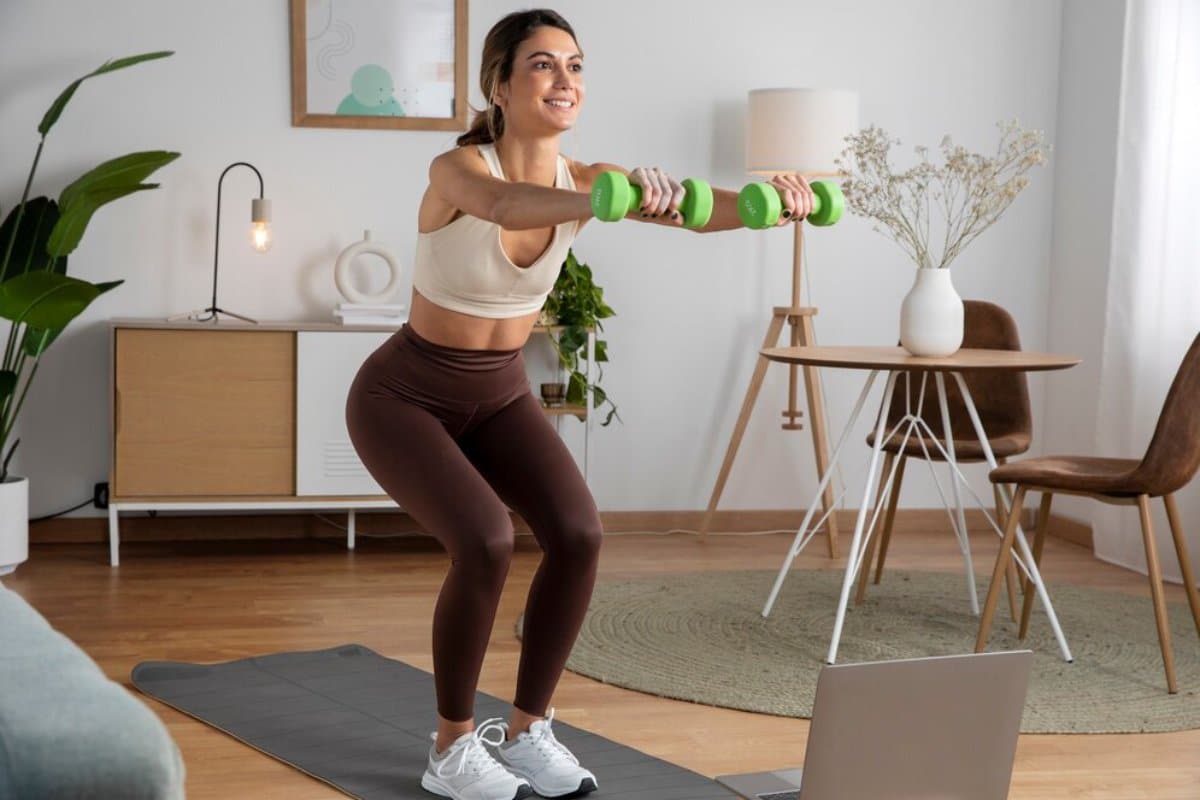
How to Develop a Personalised Fitness Routine
Starting a fitness journey is exciting, but without a clear plan, it’s easy to lose motivation or feel overwhelmed. A personalised fitness routine helps you stay focused, achieve your goals, and build long-term healthy habits. Whether you want to lose weight, gain strength, or improve overall fitness, a tailored workout plan ensures that your efforts align with your goals and fitness level.
This guide walks you through the process of creating a custom workout plan that fits your lifestyle. You’ll learn how to set realistic goals, choose the right types of exercises, and track your progress for consistent results.
Core Concept: Why Personalisation Matters
Why a One-Size-Fits-All Approach Fails
Many people follow generic workout plans found online, but these routines often don’t consider individual needs. Everyone has a different starting point, body type, and fitness goal. A customised plan is more effective because it adapts to your abilities, preferences, and schedule.
Benefits of a Personalised Workout Plan
- Targets Your Goals: Whether you aim to lose weight, build muscle, or improve endurance, a tailored routine focuses on what matters most to you.
- Prevents Injuries: Exercises that suit your fitness level reduce the risk of strain or injury.
- Increases Consistency: Enjoyable and achievable workouts make it easier to stick with the plan.
- Builds Long-Term Habits: A routine that fits into your lifestyle promotes consistency, leading to sustainable results.
Step-by-Step Guide: Creating Your Personalised Fitness Routine
1. Define Your Fitness Goals

Start by identifying what you want to achieve. Clear goals provide direction and help measure progress.
- Weight Loss: Focus on a mix of cardio and strength training to burn calories and build lean muscle.
- Muscle Gain: Prioritise resistance training with progressive overload to build strength and size.
- Improved Endurance: Include steady-state cardio and high-intensity interval training (HIIT) to enhance stamina.
- General Fitness: Combine cardio, strength, and flexibility exercises for overall well-being.
2. Assess Your Current Fitness Level
Knowing where you stand helps you design a routine that challenges you without being too difficult. Consider:
- Cardio Endurance: How long can you maintain moderate activity?
- Strength Levels: Can you perform basic bodyweight movements like push-ups and squats?
- Flexibility and Mobility: Do you feel stiff or have a limited range of motion?
3. Choose the Right Types of Exercises
To create a balanced routine, include a mix of the following:
- Cardio: Running, cycling, swimming, or brisk walking to improve heart health and burn calories.
- Strength Training: Bodyweight exercises, dumbbells, or resistance bands to build muscle and increase metabolism.
- Flexibility and Mobility: Yoga, stretching, or foam rolling to prevent stiffness and injury.
4. Determine Workout Frequency and Duration
Decide how many days per week you can realistically commit to exercising. Consistency is key, so choose a schedule that fits your lifestyle.
- Beginners: 3-4 days per week with 20-30 minute sessions.
- Intermediate: 4-5 days per week with 45-60 minute sessions.
- Advanced: 5-6 days per week with a mix of intensity and duration.
5. Structure Your Weekly Routine
A balanced routine typically includes:
- 2-3 Strength Sessions: Focus on different muscle groups to prevent overtraining.
- 2-3 Cardio Sessions: Mix steady-state cardio and HIIT for variety.
- 1-2 Flexibility or Mobility Sessions: Include stretching or yoga to maintain mobility and prevent injury.
Example Weekly Schedule:
- Monday: Full-body strength training
- Tuesday: 30-minute brisk walk or cycling
- Wednesday: Rest or stretching session
- Thursday: Upper body strength + core work
- Friday: HIIT cardio or interval training
- Saturday: Yoga or flexibility training
- Sunday: Rest or light activity (optional walk)
6. Track Progress and Adjust as Needed
Following your progress motivates you and draws attention to points that need alteration. Track key metrics such as:
- Strength Gains: Numbers of reps, sets, or weights lifted
- Cardio Endurance: How long and how intense were the workouts?
- Body: Measure yourself or note how your clothes feel.
Once you get better you also should adjust your routine so that you will be challenged.
Pro Tips: Making Your Routine More Effective
1. Start Slow and Build Gradually
If you’re new to fitness, avoid pushing too hard initially. Gradually increase the intensity and duration of your workouts to prevent burnout or injury.
2. Incorporate Variety to Avoid Plateaus
Mixing different types of workouts challenges your body and prevents stagnation. Alternate between cardio, strength, and flexibility training for balanced results.
3. Prioritise Rest and Recovery
Rest days are essential for muscle repair and preventing fatigue. Schedule at least 1-2 rest days per week to allow your body to recover.
4. Focus on Form, Not Speed
Perform exercises with proper form to avoid injury. Quality matters more than quantity when it comes to strength and flexibility exercises.
5. Listen to Your Body
Pay attention to signs of fatigue or discomfort. If you feel overly sore or drained, take a rest day or switch to a low-intensity activity.
Important Considerations: Avoiding Common Mistakes
1. Setting Unrealistic Goals
Expecting rapid results can lead to frustration and burnout. Set achievable milestones and celebrate progress, no matter how small.
2. Neglecting Warm-Up and Cool-Down
Skipping warm-ups can increase the risk of injury while cooling down helps prevent stiffness. Spend 5-10 minutes warming up and cooling down during each session.
3. Overtraining Without Rest
Too much exercise without rest can lead to fatigue, injury, and decreased performance. Ensure a balance between effort and recovery.
4. Ignoring Nutrition and Hydration
Exercise alone won’t deliver results without proper nutrition and hydration. Fuel your body with balanced meals and stay hydrated throughout the day.
Best Practices & Additional Insights
1. Set SMART Goals for Better Results
SMART (Specific, Measurable, Achievable, Relevant, Time-bound) goals help you stay focused and accountable. For example, “I want to run 5 km within 8 weeks” is more effective than a vague goal like “I want to get fit.”
2. Incorporate Functional Movements
Functional exercises, such as squats, lunges, and planks, mimic everyday movements and improve overall strength and stability.
3. Monitor Progress Beyond the Scale
Track improvements in strength, endurance, and flexibility instead of focusing solely on weight loss. Progress often shows up in non-scale victories such as increased stamina or better posture.
4. Adjust Your Routine Based on Feedback
As your fitness level improves, increase intensity, add new exercises, or lengthen workout durations. Continual adjustments ensure ongoing progress.
Quick Guide: Key Steps for a Personalised Fitness Routine
- Have Definitions: Are you looking to lose weight, gain muscle, build endurance or gain more fitness in general?
- Evaluate Your Fitness Level: Determine where you currently stand to customise the program
- Select Appropriate Exercises: Ensure a mix of cardio, strength, and flexibility workouts.
- Establish a Feasible Plan: 3-5 workouts weekly, depending on your goal.
- Monitor and Adjust: Keep track of your performance and make adjustments as necessary.
FAQs
1. How do I know if my fitness plan is working?
Track your progress by measuring strength, endurance, and body changes. If you’re consistently improving or feeling stronger, your plan is working.
2. How often should I change my workout routine?
Change your routine every 6-8 weeks to avoid plateaus. Gradually increase intensity, add variety, or focus on different muscle groups.
3. Can I build muscle with bodyweight exercises?
Yes, bodyweight exercises like push-ups, squats, and planks can build strength and muscle when performed consistently with progressive overload.
4. Should I focus more on cardio or strength training?
It depends on your goals. Cardio helps with weight loss and endurance, while strength training builds muscle and boosts metabolism. A combination of both is ideal for overall fitness.
5. What’s the best way to stay motivated?
Set realistic goals, track progress, and celebrate small victories. Finding a workout you enjoy also makes it easier to stay consistent.
Conclusion: Building a Routine You Can Stick To

Developing a personalised fitness routine empowers you to take control of your health and achieve lasting results. By setting clear goals, choosing the right exercises, and monitoring progress, you create a plan that fits your lifestyle. Consistency, variety, and listening to your body are key to sustaining long-term success.
With a customised workout plan in place, you’ll not only meet your fitness goals but also build healthy habits that become part of your daily life. Remember, progress takes time, so stay patient, stay motivated, and enjoy the journey.


